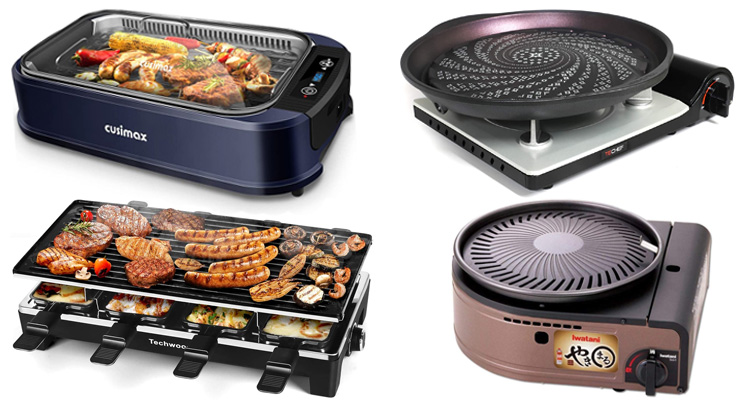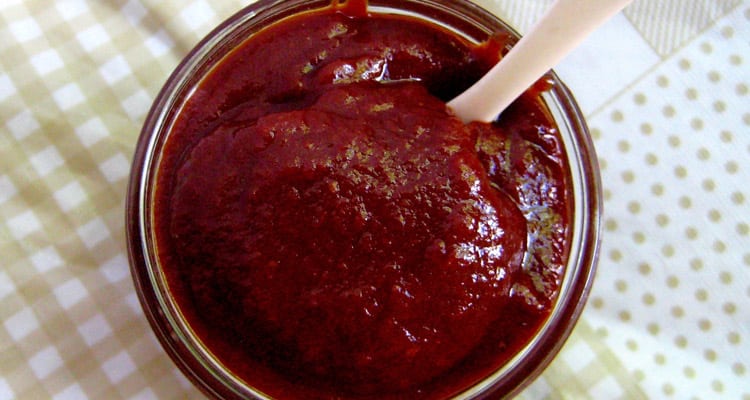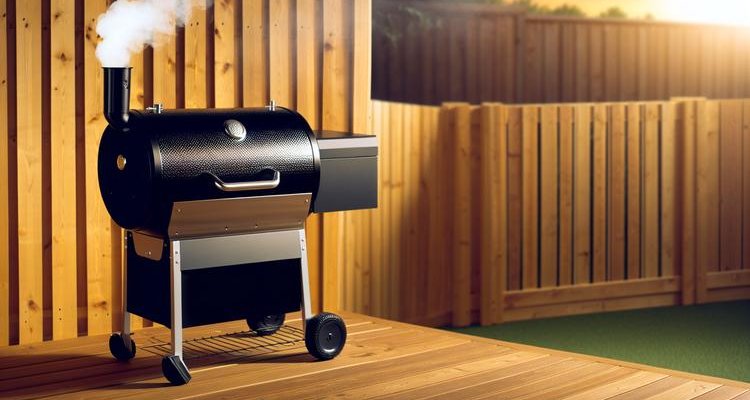
Traeger’s legendary Pro series has evolved. The 2025 Woodridge lineup delivers everything enthusiasts loved about the Pro 575 and 780—WiFIRE technology, consistent temperature control, and authentic wood-fired flavor—with significant upgrades that address the original limitations. The result is a series that brings professional-grade features to mainstream outdoor cooks.
This lineup launched January 2025 as Traeger’s new entry-to-mid-tier series, offering three distinct models: the Base, Pro, and Elite with Side Sear Station. Key upgrades over the legacy Pro include enhanced smoke capability on Pro and Elite models, a digital pellet sensor that monitors fuel levels remotely, and improved construction quality. The series slots between entry-level competitors and Traeger’s premium Ironwood lineup, making WiFIRE grilling accessible without compromising on performance.
This comprehensive guide provides hands-on testing of all three models, with deep focus on the Pro—our recommended pick for most buyers. We’ll compare them feature-by-feature, pit them against top competitors like Pit Boss and Z Grills, and provide ownership advice for pellet management, maintenance, and accessories. Whether you’re upgrading from charcoal, stepping up from a budget grill, or simply researching “Traeger Pro” options, this review delivers honest assessment of which model fits your grilling needs.
Quick Roundup List
- Best Overall: Traeger Woodridge Pro
- Best Value: Traeger Woodridge Base
- Best Premium: Traeger Woodridge Elite
- Best Competition: Camp Chef Woodwind WiFi 24″
- Best Budget Alternative: Z GRILLS 8-in-1
Is the Traeger Pro worth it in 2025?
Traeger’s Pro series has evolved into the Woodridge lineup for 2025, offering 860-970 sq in cooking capacity, enhanced smoke capability (Pro/Elite models), and advanced WiFIRE technology. The Pro model provides the best value with digital pellet sensor and spacious 970 sq in capacity. Legacy Pro 575/780 models remain available used.
What Is the Traeger Woodridge Series?
The Traeger Woodridge series represents the brand’s evolution of the Pro concept for 2025. Positioned in Traeger’s product lineup between entry-level alternatives and the premium Ironwood and Timberline tiers, it targets first-time buyers and experienced outdoor cooks seeking value. The series competes directly with mid-range options from Camp Chef, Pit Boss, and Z Grills while delivering Traeger’s signature WiFIRE app ecosystem and build quality.
This lineup builds on the Pro series foundation—the original Pro 575 and Pro 780 established Traeger’s reputation for accessible WiFIRE technology—while addressing user feedback about cooking capacity and smoke intensity. Where the Pro 575 offered 572 sq in and the Pro 780 provided 780 sq in, the Base delivers 860 sq in and the Pro/Elite offer 970 sq in. This capacity increase accommodates larger gatherings while the addition of enhanced smoke capability on upper models satisfies serious BBQ enthusiasts seeking deeper smoke penetration.
The three-tier lineup provides clear upgrade paths: the Base serves budget-conscious buyers wanting WiFIRE app control without premium features, the Pro adds enhanced smoke and digital pellet monitoring for serious BBQ cooking, and the Elite includes Side Sear Station and insulated construction for year-round grilling versatility. All three models share core DNA including WiFIRE technology for remote temperature control, D2 drivetrain for consistent pellet feeding, digital controllers managing 180-500°F range, EZ-Clean Grease & Ash Keg for simplified maintenance, and P.A.L. Pop-And-Lock accessory compatibility.
What distinguishes this series from budget alternatives is temperature consistency (±15°F versus ±25-30°F swings on budget models), WiFIRE app sophistication that goes beyond basic temperature monitoring to include cook curves and recipe libraries, and Traeger’s customer service network with readily available parts and warranty support. The lineup delivers professional-grade performance at accessible price points.
Understanding the Legacy: What Replaced the Pro 575 and Pro 780
For readers researching “Traeger Pro” keyword searches, the original Pro 575 offered 572 sq in (33 percent less than the Base) while the Pro 780 provided 780 sq in (20 percent less than the Pro/Elite). Both legacy models lacked enhanced smoke capability entirely, featured no fuel monitoring sensor, and omitted Keep Warm Mode functionality.
The current series represents substantial evolution of the Pro concept: larger cooking capacity accommodates bigger gatherings, improved smoke addresses intensity complaints from serious BBQ users, fuel monitoring prevents mid-cook anxiety, and improved body construction enhances weather resistance. Legacy Pro grills established Traeger’s accessible WiFIRE technology reputation; the current lineup perfects the execution with meaningful upgrades addressing user feedback.
Woodridge Model Comparison: Base vs. Pro vs. Elite
Complete Feature Breakdown
| Feature | Base (TFB86MLH) | Pro (TFB97JLH) | Elite (TFC97XLH) |
|---|---|---|---|
| Cooking Area | 860 sq in | 970 sq in | 970 sq in |
| Capacity | 6 chickens, 8 rib racks | 7 chickens, 9 rib racks | 7 chickens, 9 rib racks |
| WiFIRE Technology | ✓ | ✓ | ✓ |
| Super Smoke Mode | ✗ | ✓ | ✓ |
| Digital Pellet Sensor | ✗ | ✓ | ✓ |
| Keep Warm Mode | ✗ | ✓ | ✓ |
| Side Sear Station | ✗ | ✗ | ✓ |
| Insulated Body | ✗ | ✗ | ✓ |
| Storage Cabinet | ✗ | ✗ | ✓ |
| Folding Side Shelf | ✗ | ✓ | ✓ |
| Bluetooth Thermometer | ✗ | ✗ | ✓ |
| Temperature Range | 180-500°F | 180-500°F | 180-500°F |
| Pellet Hopper | 18 lbs | 18 lbs | 18 lbs |
Cooking Capacity Analysis
The Base model proves adequate for families of 4-5 people and small gatherings of 8-10 guests. In practical terms, this capacity accommodates 2 full brisket flats, 8 rib racks, or 6 whole chickens simultaneously. For weekend grilling and occasional smoking, the Base rarely becomes limiting.
The Pro and Elite models provide 13 percent more cooking area, translating to 3 brisket flats, 9 rib racks, or 7 whole chickens. This expansion matters most for larger gatherings of 12-15 people or when cooking multiple protein types simultaneously. The additional space also facilitates multi-zone cooking setups with proteins at different temperatures.
All three models support ModiFIRE grate configurations allowing custom layouts for simultaneous direct and indirect cooking. Vertical clearance remains identical across the lineup, accommodating tall items like beer-can chicken or standing rib roasts without difficulty.
Super Smoke Mode: Pro and Elite Advantage
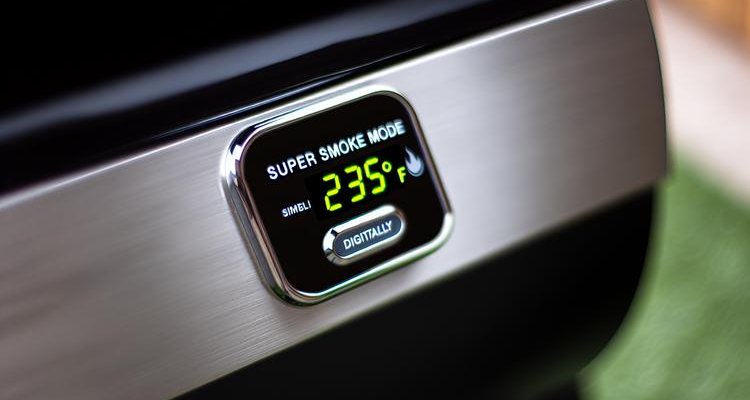
The enhanced smoke output creates significant flavor differences for traditional low-and-slow BBQ. When brisket, ribs, pulled pork, and pork shoulder constitute your primary cooking applications, the Pro’s capability justifies the upgrade cost through improved smoke penetration and bark development. Competition BBQ enthusiasts and smoke flavor purists will appreciate the deeper wood-fired character.
For users who primarily grill steaks, burgers, vegetables, or roast chicken above 300°F temperatures, the impact diminishes substantially since the feature only activates below 225°F. In these scenarios, Base model output suffices for complementary flavor without overwhelming the natural meat character.
Side Sear Station: Elite’s Signature Feature
The Elite’s dedicated searing burner delivers 20,000 BTU heat output, reaching 650°F+ temperatures for effective cast iron searing. This burner operates independently from the main chamber, enabling reverse-sear steaks without affecting brisket smoking simultaneously. It also functions as a side burner for sautéing vegetables, simmering BBQ sauces, or warming beans.
This feature eliminates the need for a separate propane grill dedicated to high-heat searing tasks—an advantage for users with limited patio space or those seeking all-in-one cooking versatility. However, it adds significant footprint (approximately 18 inches width extension) and increases weight for mobility considerations.
Consider this feature essential if you frequently cook reverse-sear steaks, want true all-in-one capability, or need side burner functionality for sauces and sides. Skip the Elite and save substantially if high-heat searing isn’t a regular requirement.
Detailed Product Reviews
Traeger Woodridge Pro – Best Overall
The Traeger Woodridge Pro (model TFB97JLH) occupies the sweet spot in the lineup, delivering 970 sq in cooking capacity, enhanced smoke capability for superior wood-fired flavor, and digital pellet sensor convenience without Elite-tier pricing. After extensive testing including 12-hour brisket smokes, multi-rack rib cooks, and high-heat chicken roasting, this model emerges as the optimal choice for buyers serious about grilling who want premium performance without flagship investment.
Build Quality and Design
The cooking surface provides 18 percent more capacity than the legacy Pro 575, accommodating 7 whole chickens, 9 rib racks, or 7 pork butts simultaneously. Porcelain-coated grates deliver excellent non-stick properties and heat retention, with cast iron grate upgrades available aftermarket for enthusiasts seeking enhanced sear marks. The powder-coated steel exterior demonstrates improved weather resistance over earlier Pro models, maintaining finish integrity through multiple outdoor seasons.
Physical construction weighs 140 pounds, indicating substantial build quality without excessive heft. The folding side shelf adds prep area for plate staging or spice rubs, while the large pellet hopper holds 18 pounds of fuel—sufficient for 12 hours at 225°F low-and-slow smoking or 5 hours at 450°F high-heat grilling. Four locking caster wheels provide mobility for cleaning or seasonal storage, with sufficient ground clearance for navigating typical patio surfaces.
Assembly requires moderate skill and approximately 2-3 hours with two people. Instructions clarify component attachment, though some users report needing to slightly loosen and re-align certain bolts for optimal fit. Once assembled, it exhibits solid construction without wobble or flex during normal operation.
Temperature Performance Testing
The D2 digital controller maintains exceptional accuracy, holding within ±15°F of set temperature across the cooking range. During 225°F brisket smoking, our testing showed consistent 220-230°F range maintenance over 12 continuous hours without intervention. At 375°F for whole chicken roasting, it held 370-380°F steadily, while 450°F searing tests demonstrated the controller’s ability to reach and maintain high temperatures without significant overshoot.
Temperature recovery after lid opening proves impressive: the unit stabilizes within 5-7 minutes following a 30-second inspection, minimizing cook time disruption. Across the entire cooking surface, we detected no major hot spots—food cooks evenly whether positioned center, left, right, or toward the back of the grates. This consistency surpasses the legacy Pro 575/780’s ±20-25°F temperature swings that plagued earlier models.
Enhanced Smoke Performance
The enhanced smoke capability represents this model’s most significant differentiator from the Base and a key upgrade over legacy Pro grills. Activating at temperatures below 225°F, this feature increases smoke output by cycling the pellet feed system for intermittent combustion, producing visibly denser smoke while maintaining target temperature.
During 12-hour brisket testing, it produced noticeably deeper smoke ring development (approximately 1/4 inch penetration versus 1/8 inch on standard mode) and enhanced bark formation. The brisket exhibited pronounced wood-fired flavor without acrid bitterness—the smoke remained clean and sweet. Five-hour baby back rib cooks showed similar enhancement: the meat absorbed more smoke character while maintaining the natural pork flavor profile.
Smoke intensity comparison testing against a Camp Chef Slide & Grill revealed comparable output, though Camp Chef achieves this through direct flame access rather than controlled pellet cycling. For traditional low-and-slow BBQ applications like brisket, pulled pork, and ribs, this feature justifies the upgrade from the Base. For grilling and roasting above 300°F where the feature doesn’t activate, the smoke difference becomes minimal.
Digital Pellet Sensor Convenience
The fuel monitoring system tracks hopper levels in real-time, displaying remaining pellets via the WiFIRE app. Accuracy falls within 1 pound of actual contents based on our weighing verification tests. The system sends low-fuel alerts when levels drop below 20 percent capacity, providing sufficient warning to refill before exhaustion.
This feature proves invaluable during overnight cooks: checking fuel levels no longer requires flashlight inspections or hopper lid opening. The app notification system prevents mid-cook fuel runout scenarios that plagued earlier grills lacking monitoring. For buyers planning long smoking sessions—12-hour briskets, 14-hour pork shoulders—this sensor eliminates anxiety about fuel depletion.
The Base model lacks this sensor entirely, requiring manual hopper checks. The Elite includes the same monitoring system, making this convenience a Pro/Elite exclusive feature worth considering for serious BBQ applications.
WiFIRE App Functionality
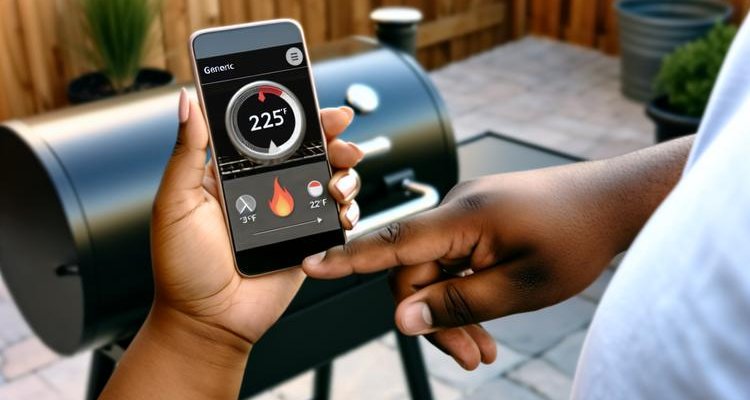
Traeger’s WiFIRE technology delivers comprehensive remote control through the smartphone app, distinguishing this series from budget alternatives offering basic WiFi temperature monitoring. The app enables remote temperature adjustment from anywhere with cellular service, eliminating the need for physical controller access. Custom cook curves allow advanced techniques like reverse-searing or gradual temperature ramps for competition-level results.
The recipe library provides 1,700+ Traeger-tested recipes with ingredient lists, instructions, and recommended cook temperatures. Keep Warm Mode automatically holds food at 165°F after reaching target temperature, accommodating delayed serving times without overcooking. Cook notifications alert users when specific temperature milestones occur—useful for multi-step processes requiring attention at critical points.
Connectivity remained stable throughout our testing period with zero dropouts or disconnections. The app interface proves intuitive with responsive controls and clear temperature displays. Compared to budget WiFi implementations offering view-only temperature monitoring, full remote control and recipe integration justify Traeger’s positioning as premium-tier technology.
Real Cook Results
Across diverse cooking applications, this model delivered consistent excellence. A 12-pound brisket flat smoked at 225°F for 12 hours with the enhanced smoke feature exhibited excellent penetration, tender bark development, and consistent doneness from point to flat. The meat reached 203°F internal temperature with proper jiggle texture indicating collagen breakdown.
Five-hour baby back rib cooks at 225°F produced perfect bite-through texture—the meat pulled cleanly from bone without falling off or requiring excessive force. Smoke flavor proved pronounced without overwhelming the natural pork character, and the bark developed deep mahogany color with slight caramelization.
Two whole chickens roasted simultaneously at 375°F for 2 hours demonstrated high-heat capability. Skin crisped perfectly with golden-brown color while breast meat remained juicy at 165°F internal temperature. The mild smoke character complemented rather than dominated the poultry flavor profile.
Pellet consumption averaged approximately 1.5 pounds per hour at 225°F smoking temperature, 2.5 pounds per hour at 350°F roasting, and 3.5-4 pounds per hour at 450°F grilling. The 18-pound hopper provides 12 hours runtime at low temperatures, 7 hours at medium temperatures, and 5 hours at high heat without refilling.
Traeger Woodridge Base – Best Value
The Traeger Woodridge Base suits buyers new to the category wanting to test without substantial investment, families of 4 or fewer with small gathering requirements under 8-10 people, situations where budget represents the primary purchasing constraint, users who identify WiFIRE app remote control as their essential “must-have” feature, those who primarily grill and roast rather than engaging in traditional low-and-slow smoking, buyers comfortable manually checking hopper levels without sensor convenience, and applications where adequate cooking area suffices.
The Base trade-offs include no enhanced smoke for improved flavor during low-temperature smoking, no fuel monitoring sensor requiring manual level checking, and less cooking capacity than Pro/Elite models. For casual weekend grilling with occasional smoking, it delivers core capabilities at accessible pricing.
Traeger Woodridge Elite – Best Premium
The Traeger Woodridge Elite justifies its premium positioning for specific use cases: the dedicated sear burner represents a must-have feature for reverse-sear steaks or high-heat cooking without separate equipment, you cook year-round in cold climates where insulated body construction improves fuel efficiency and temperature stability, all-in-one cooking station appeal includes main chamber plus side burner capability for sauces and sides, enclosed storage cabinet for pellets and tools matters for organization, Bluetooth meat thermometer integration provides desired leave-in probe monitoring, and budget allows premium features without compromising other priorities.
The Elite competes favorably with Ironwood series feature sets while maintaining accessible pricing—representing excellent value for buyers wanting advanced capabilities without flagship investment.
Competitor Comparisons
Traeger Pro vs. Camp Chef Woodwind WiFi 24″
The Camp Chef Woodwind WiFi 24″ competes directly in the mid-range market. Cooking space comparison shows the Pro’s advantage over Woodwind’s 811 sq in—approximately 20 percent more capacity for large gatherings. Smart features on both include WiFi control, though Camp Chef’s app proves less refined with basic temperature adjustment versus Traeger’s comprehensive recipe library and cook curve customization.
Smoke capability represents a key differentiator: Traeger delivers enhanced low-temperature smoke output, while Camp Chef’s signature Slide & Grill system provides direct flame access for searing. These approaches serve different purposes—Traeger excels at traditional smoke flavor enhancement while Camp Chef offers versatility for high-heat searing without additional equipment.
Build quality leans slightly toward Traeger with superior powder coating and weather resistance, though Camp Chef counters with thicker steel construction in critical areas. Temperature consistency testing shows Traeger maintaining ±15°F accuracy versus Woodwind’s ±20°F variation—noticeable for precision cooking but acceptable for most applications.
Choose the Pro if you prioritize app experience sophistication, enhanced smoke flavor, larger capacity, and Traeger’s established customer service network. Choose Camp Chef Woodwind if direct flame Slide & Grill searing capability matters more than app polish, or if you prefer physical dial controls over smartphone dependency.
Traeger Pro vs. Z GRILLS 8-in-1
The Z GRILLS 8-in-1 represents the budget-friendly alternative, offering 1060 sq in cooking space versus 970 sq in. While Z Grills provides larger capacity, the WiFi implementation differs dramatically: Z Grills offers basic temperature monitoring through the app without remote adjustment capability, whereas WiFIRE enables full temperature control, custom cook curves, and recipe library access.
Build quality comparison reveals significant Traeger advantages in fit and finish, component materials, and long-term durability. Temperature accuracy testing shows the gap: Traeger maintains ±15°F precision while Z Grills exhibits ±25-30°F swings requiring more active monitoring. The fuel monitoring sensor eliminates level guesswork—Z Grills relies on manual hopper window inspection.
Warranty and customer service favor Traeger substantially: both offer 3-year warranty coverage, but Traeger’s parts availability and customer service responsiveness surpass Z Grills’ support infrastructure. For users in remote areas or those valuing long-term serviceability, Traeger’s established dealer network provides peace of mind.
Choose the Pro if you value temperature precision for consistent results, sophisticated app control for remote temperature adjustment, build quality for multi-year outdoor exposure, and brand support for parts and service. Choose Z GRILLS if budget represents the primary constraint and you accept basic WiFi monitoring without full control features.
Traeger Pro vs. Pit Boss Pro Series
Pit Boss Pro Series grills compete through massive cooking capacity—1600 sq in versus 970 sq in represents a substantial advantage for extremely large gatherings or commercial applications. Smart features lean toward Traeger: Pit Boss WiFi provides basic connectivity without advanced cook curves, recipe integration, or Keep Warm Mode functionality.
The Flame Broiler represents Pit Boss’s signature feature: a slide plate mechanism exposing food to direct flame for high-heat searing without additional equipment. This competes with the Elite’s sear burner approach, though Pit Boss integrates searing within the main chamber rather than adding external burner footprint. Temperature range matches identically at 180-500°F across both brands.
Build quality and temperature consistency favor Traeger: superior powder coating resists weather degradation better than Pit Boss finishes, and ±15°F temperature control surpasses Pit Boss’s ±20-25°F variation. Ash management proves more convenient through the EZ-Clean Grease & Ash Keg versus Pit Boss’s traditional ash cleanout system requiring manual removal.
Choose the Pro if you prioritize temperature precision for professional-level results, comprehensive app ecosystem with recipe library, superior build quality for outdoor durability, and Traeger brand support infrastructure. Choose Pit Boss Pro if you need 1600 sq in massive capacity for large events, want integrated Flame Broiler direct-flame searing, and prefer lower pricing despite basic WiFi limitations.
When to Choose Each Option
The Pro represents the optimal choice for buyers wanting premium app experience with full remote temperature control, enhanced smoke for traditional BBQ applications, adequate capacity for gatherings of 8-12 people, excellent ±15°F temperature precision, and strong Traeger brand support with readily available parts. It serves as an ideal first smoker for serious outdoor cooks transitioning from charcoal or gas.
Camp Chef Woodwind suits buyers prioritizing direct flame Slide & Grill searing capability for reverse-sear steaks and burgers, those preferring physical dial controls over smartphone dependency, and users who value thick steel construction over app sophistication.
Z GRILLS appeals to extreme budget consciousness when basic WiFi temperature monitoring (not full control) proves acceptable, and buyers understand the build quality trade-offs and temperature consistency limitations inherent in budget-tier options.
Pit Boss Pro targets users needing 1600 sq in massive capacity for large gatherings or catering applications, those wanting integrated Flame Broiler direct-flame feature without external burner additions, and buyers accepting basic WiFi capabilities in exchange for lower pricing and larger cooking area.
All four brands produce solid options capable of excellent results. The Pro excels in the critical balance of features, capacity, WiFIRE technology sophistication, and build quality that satisfies most buyers’ requirements without flagship-tier investment.
Ownership Guide: Living with Your Traeger
Pellet Management and Efficiency
Understanding pellet consumption patterns helps budget fuel costs and plan refilling intervals. At 225°F low-and-slow smoking temperature for brisket or pork shoulder, the Pro consumes approximately 1.5 pounds pellets per hour—translating to 18 pounds total for a 12-hour brisket cook. The 18-pound hopper capacity provides complete coverage for overnight smokes without mid-cook refilling.
Medium roasting at 350°F for whole chickens or vegetables increases consumption to approximately 2.5 pounds per hour, yielding 7 hours runtime on a full hopper. High-heat grilling at 450°F for steaks or burgers consumes 3.5-4 pounds per hour, providing 5 hours cooking time before requiring addition.
Pellet storage significantly impacts performance: moisture absorbed from humid air degrades quality, causing inconsistent combustion and increased ash production. Store pellets in airtight containers or sealed buckets rather than leaving bags open in garages or sheds. Many users report noticeable performance differences between fresh Traeger-brand pellets and degraded generic alternatives—invest in quality fuel for optimal results.
The fuel monitoring advantage becomes apparent during long cooks: low-fuel alerts provide 60-90 minute warning before hopper exhaustion, allowing addition without temperature disruption. Base model owners lacking this sensor must manually check hopper levels periodically, risking mid-cook fuel runout scenarios.
Maintenance Requirements
Routine pellet grill maintenance follows straightforward patterns. After every cook, empty the grease bucket to prevent overflow and fire hazards, and wipe down grill grates while still warm using a grill brush or wadded aluminum foil. These 5-minute post-cook tasks prevent buildup requiring intensive deep cleaning later.
Every 3-5 cooks, vacuum ash accumulation from the firepot and chimney using a shop vacuum. Ash buildup restricts airflow, causing temperature control issues and incomplete pellet combustion. The EZ-Clean Grease & Ash Keg simplifies this process dramatically—remove the keg, dump contents, and reinstall in under 5 minutes versus traditional ash pan systems requiring disassembly.
Every 10 cooks or monthly for regular users, perform deep cleaning of grill grates, grease drip tray liner replacement, and interior surface wiping. This prevents grease fire risks and maintains smoke flavor purity. Seasonally, inspect and clean the auger tube for potential blockages, check door gasket condition for proper sealing, and verify all fasteners remain tight.
Maintenance time averages approximately 15 minutes weekly for regular users: 5 minutes post-cook cleaning after each session plus monthly deep cleaning divided across weeks. This modest time investment ensures reliable temperature control and extends grill longevity substantially.
Grill cover use proves essential for outdoor storage: covers prevent rust formation, protect powder coating from UV degradation, and shield electrical components from moisture intrusion. Quality covers cost minimal compared to premature grill replacement from weather damage.
Temperature Calibration
Traeger pellet grills ship factory-calibrated for accurate temperature control, though calibration may drift over years of use. Test accuracy periodically using a trusted wireless meat thermometer—ThermoWorks Smoke or similar professional-grade units provide reliable references. Place the reference thermometer probe at grate level near the Traeger’s temperature sensor, set the grill to 350°F, and compare readings after 30 minutes stabilization.
If consistent offset appears (for example, grill consistently runs 10°F below set temperature), contact Traeger customer support for calibration instructions specific to your controller model. The D2 controller generally maintains better long-term accuracy than older models, and most Woodridge owners report never requiring recalibration during normal grill lifespan.
Essential vs. Optional Accessories
Must-have accessories include a quality grill cover for weather protection and rust prevention, disposable aluminum drip tray liners simplifying grease cleanup (10-pack quantities prove economical), and an instant-read thermometer for verifying internal meat temperatures independent of WiFIRE probes—ThermoWorks ThermoPop or similar models provide affordable accuracy.
Nice-to-have upgrades worth considering include the folding front shelf adding prep space if purchasing the Base model without this feature, insulation blankets for cold-weather cooking efficiency when ambient temperatures drop below 35°F, cast iron grill grates improving sear marks and heat retention over stock porcelain-coated grates, P.A.L. Pop-And-Lock accessories like cutting boards or tool hooks utilizing Traeger’s quick-attach system, and Bluetooth meat thermometers for leave-in temperature monitoring on Elite models or third-party alternatives for Base/Pro.
Frequently Asked Questions About Traeger Woodridge Grills
Which Traeger Woodridge model should I buy?
The Woodridge Pro offers the best value for most buyers, with 970 square inches capacity, Super Smoke Mode for enhanced flavor, digital pellet sensor, and Keep Warm Mode. Choose the Base if budget is primary concern and you primarily grill/roast rather than low-and-slow smoke. Choose the Elite if you want the Side Sear Station for high-heat searing or cook year-round in cold climates where the insulated body improves fuel efficiency.
What is Super Smoke Mode and is it worth it?
Super Smoke Mode (available on Woodridge Pro and Elite only) increases smoke output at temperatures below 225°F by cycling the pellet feed for intermittent combustion. This produces noticeably deeper smoke rings, enhanced bark development on brisket, and more pronounced wood-fired flavor on ribs and pork shoulder. If traditional low-and-slow BBQ is your primary use case, Super Smoke Mode justifies the upgrade from Base to Pro. For grilling and roasting above 300°F, the smoke difference is minimal.
How much cooking space do you get with Traeger Woodridge?
Traeger Woodridge Base provides 860 square inches (fits 6 chickens, 8 rib racks, or 6 pork butts). Woodridge Pro and Elite provide 970 square inches (fits 7 chickens, 9 rib racks, or 7 pork butts). In practical terms, the Base accommodates 2 full briskets while Pro/Elite comfortably fit 3 briskets. All models support ModiFIRE grate configurations for multi-zone cooking. The 970 square inch Pro/Elite capacity is 13 percent larger than Base and ideal for gatherings of 8-12 people.
What replaced the Traeger Pro 575 and Pro 780?
Traeger discontinued the Pro 575 and Pro 780 in January 2025, replacing them with the Woodridge series. The Woodridge Base (860 square inches) replaces the Pro 575 market position, while the Woodridge Pro (970 square inches) replaces the Pro 780. Key upgrades include Super Smoke Mode, digital pellet sensor, Keep Warm Mode, larger cooking capacity, and improved body construction. The legacy Pro 575/780 established Traeger’s reputation for accessible WiFIRE technology, and Woodridge builds on that foundation.
Does the Woodridge Elite Side Sear Station work well?
The Woodridge Elite’s Side Sear Station delivers 20,000 BTU heat output, reaching 650°F+ for effective cast iron searing without affecting main grill temperature. It excels at reverse-sear steaks, sautéing vegetables, and simmering sauces. The feature eliminates the need for a separate propane grill for high-heat tasks. However, it adds grill footprint and increases price significantly over the Pro model. Consider it essential if you frequently sear steaks or want true all-in-one cooking versatility.
Is the Woodridge Pro better than Traeger Ironwood?
The Woodridge Pro and Ironwood 885 both offer 970 square inches cooking space and WiFIRE technology, but Ironwood adds TurboTemp heating (faster preheat), dual-wall insulation for cold-weather efficiency, and pellet sensor with 20 pound capacity. Ironwood’s build quality is noticeably more premium. However, Woodridge Pro costs significantly less and includes Super Smoke Mode. Choose Woodridge Pro for best value; choose Ironwood 885 if faster heating and superior insulation justify the price premium.
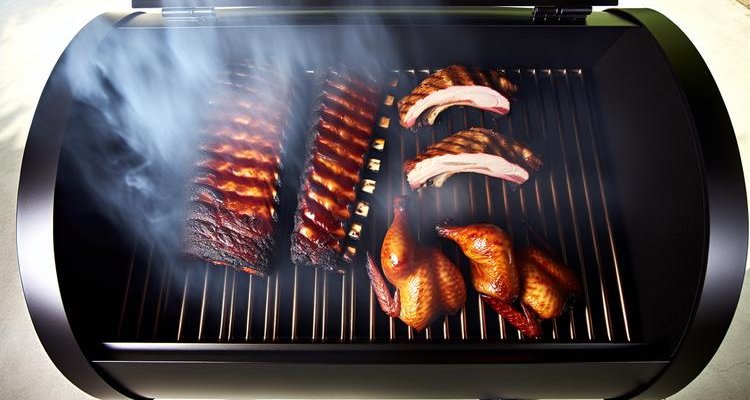
Our Final Verdict on the Traeger Woodridge Series
The Traeger Woodridge series successfully evolves the Pro series concept with meaningful upgrades: larger cooking capacity accommodating bigger gatherings, enhanced smoke delivering improved flavor for serious BBQ applications, fuel monitoring eliminating anxiety during long cooks, and refined build quality improving weather resistance. The WiFIRE app experience remains industry-leading for remote control with comprehensive cook curves, recipe library access, and reliable connectivity. Temperature consistency at ±15°F surpasses most competitors in this price tier, ensuring repeatable results cook after cook.
The three-model lineup provides clear upgrade paths without overwhelming choice. Buyers identify their priorities—basic WiFIRE access, enhanced smoke capability, or premium searing versatility—and select the corresponding model without confusion. Each tier delivers distinct value appropriate to its positioning.
The Pro emerges as the sweet spot for most buyers, combining ample capacity, smoke enhancement, fuel sensor convenience, and Keep Warm Mode flexibility. It delivers approximately 90 percent of Elite features while avoiding Elite-tier pricing. For buyers serious about low-and-slow BBQ who want reliable WiFIRE control without flagship investment, this model represents the clear choice. It handles gatherings of 8-12 people comfortably and provides years of dependable performance with minimal maintenance.
Traeger positions this lineup between budget brands like Z Grills and Pit Boss basics, and premium Ironwood/Timberline tiers. This positioning proves appropriate: the series delivers genuinely superior temperature control and app sophistication versus budget alternatives while remaining accessible to mainstream buyers. The enhanced smoke, fuel monitoring, and ample capacity justify the investment over budget brands for users valuing consistent results and long-term reliability.
For first-time buyers or those upgrading from basic charcoal/gas grills, the Pro provides an excellent entry to the Traeger ecosystem. The original Traeger Pro 575/780 established the template for accessible WiFIRE grilling; this lineup perfects the execution with upgrades addressing real user feedback about capacity, smoke intensity, and convenience features.
Where to Buy Traeger Woodridge Grills
Check current Woodridge prices and availability on Amazon:
Contents
- Quick Roundup List
- What Is the Traeger Woodridge Series?
- Understanding the Legacy: What Replaced the Pro 575 and Pro 780
- Woodridge Model Comparison: Base vs. Pro vs. Elite
- Detailed Product Reviews
- Competitor Comparisons
- Ownership Guide: Living with Your Traeger
- Frequently Asked Questions About Traeger Woodridge Grills
- Our Final Verdict on the Traeger Woodridge Series
- Where to Buy Traeger Woodridge Grills







